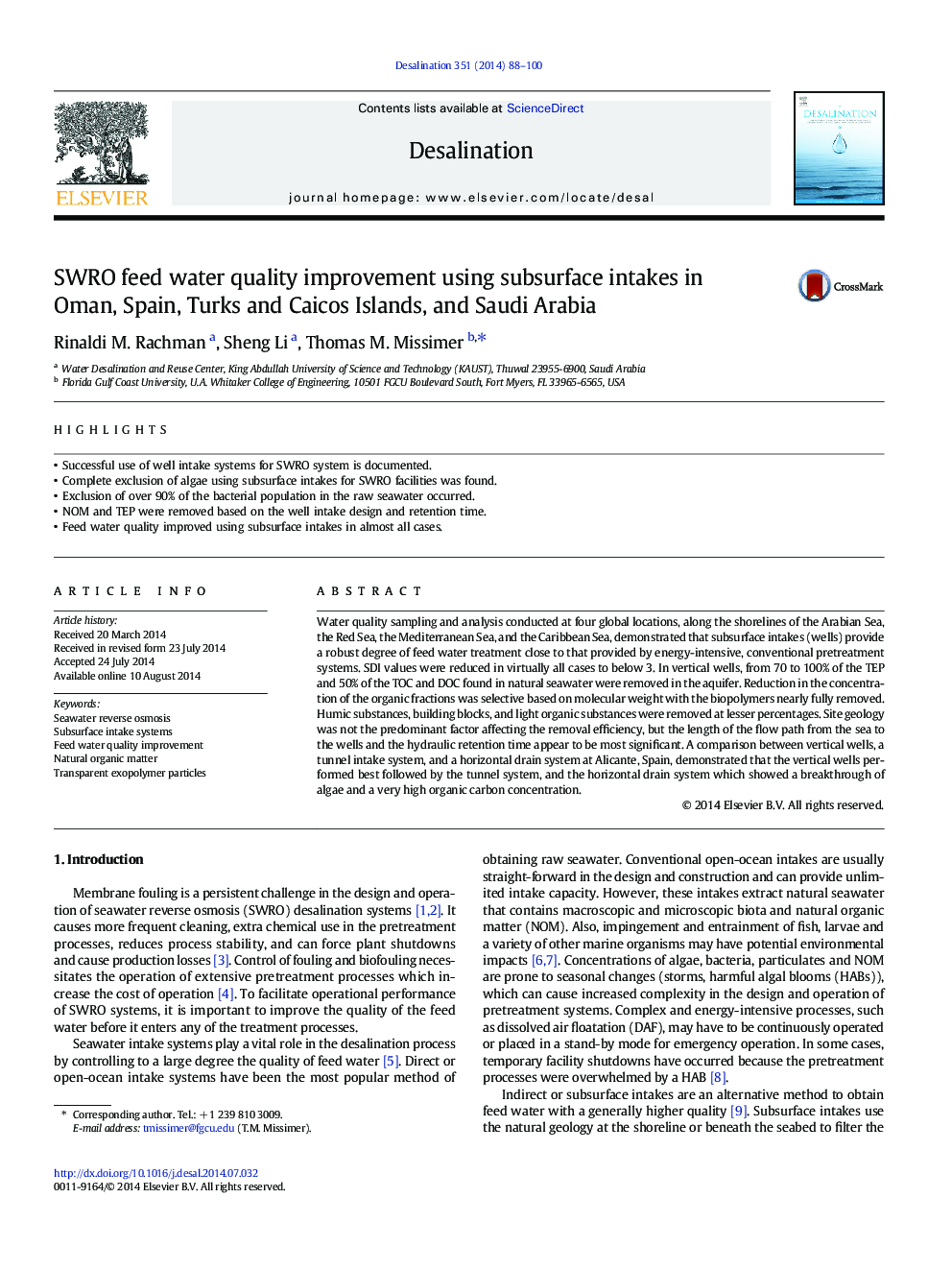| Article ID | Journal | Published Year | Pages | File Type |
|---|---|---|---|---|
| 623292 | Desalination | 2014 | 13 Pages |
Abstract
Water quality sampling and analysis conducted at four global locations, along the shorelines of the Arabian Sea, the Red Sea, the Mediterranean Sea, and the Caribbean Sea, demonstrated that subsurface intakes (wells) provide a robust degree of feed water treatment close to that provided by energy-intensive, conventional pretreatment systems. SDI values were reduced in virtually all cases to below 3. In vertical wells, from 70 to 100% of the TEP and 50% of the TOC and DOC found in natural seawater were removed in the aquifer. Reduction in the concentration of the organic fractions was selective based on molecular weight with the biopolymers nearly fully removed. Humic substances, building blocks, and light organic substances were removed at lesser percentages. Site geology was not the predominant factor affecting the removal efficiency, but the length of the flow path from the sea to the wells and the hydraulic retention time appear to be most significant. A comparison between vertical wells, a tunnel intake system, and a horizontal drain system at Alicante, Spain, demonstrated that the vertical wells performed best followed by the tunnel system, and the horizontal drain system which showed a breakthrough of algae and a very high organic carbon concentration.
Related Topics
Physical Sciences and Engineering
Chemical Engineering
Filtration and Separation
Authors
Rinaldi M. Rachman, Sheng Li, Thomas M. Missimer,
